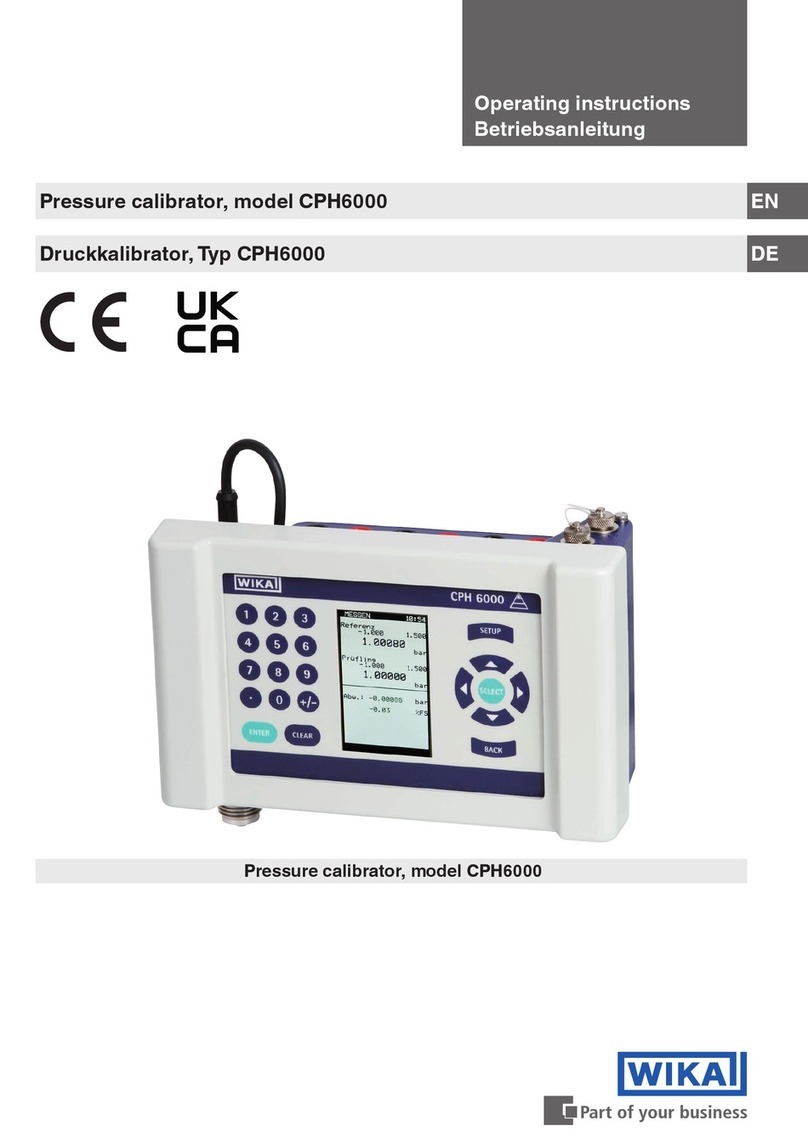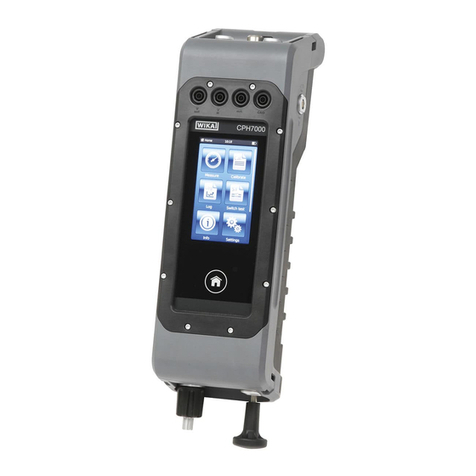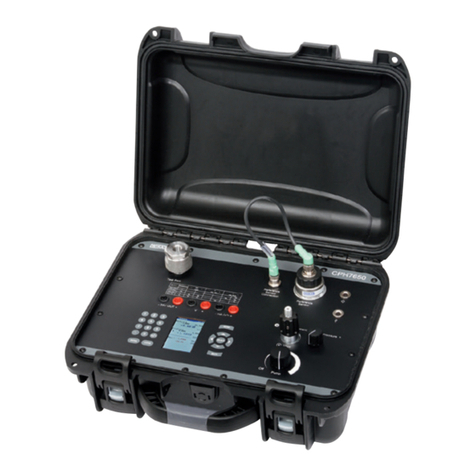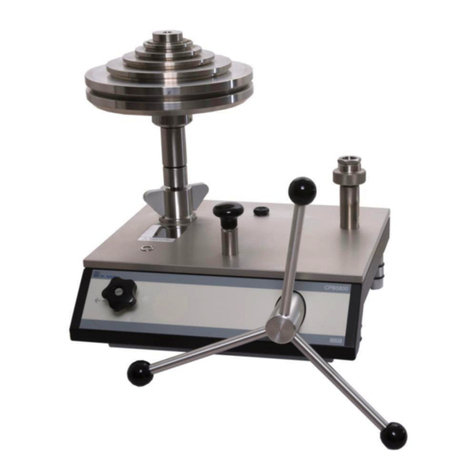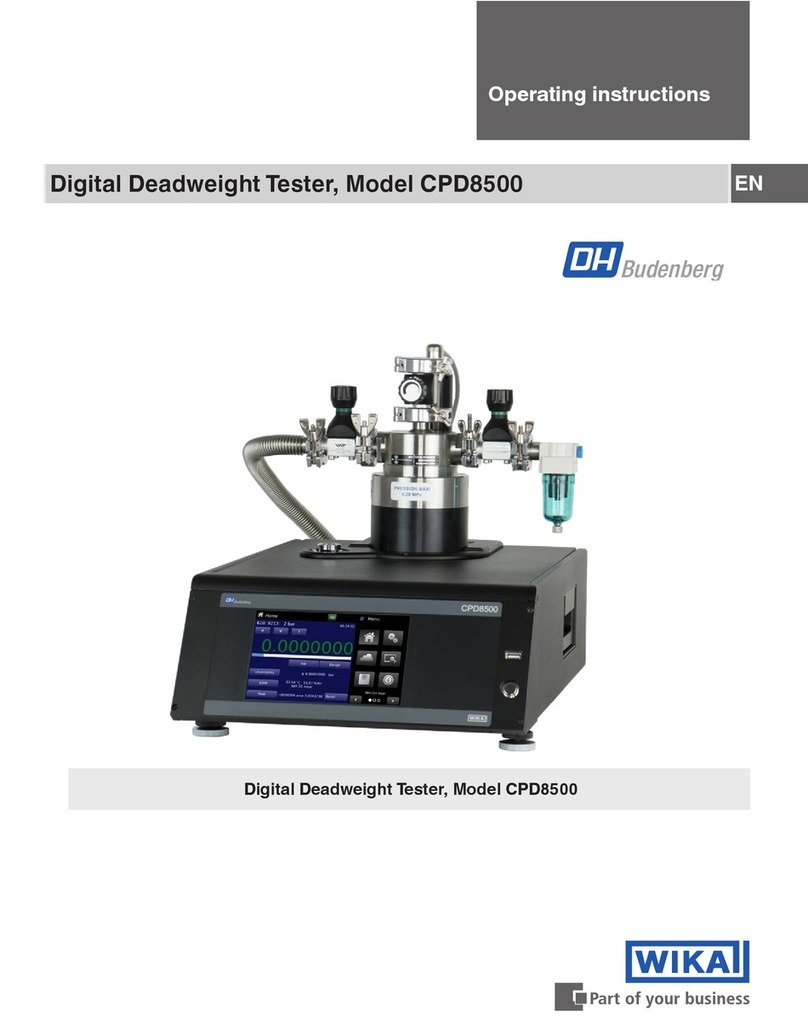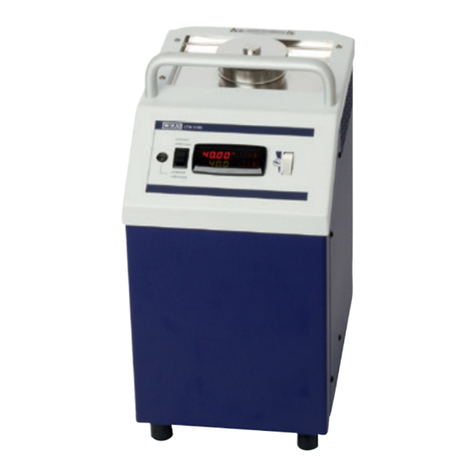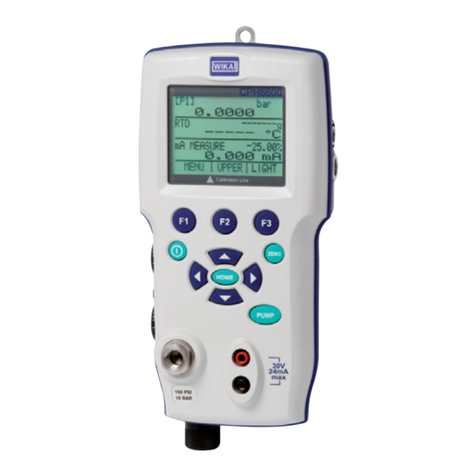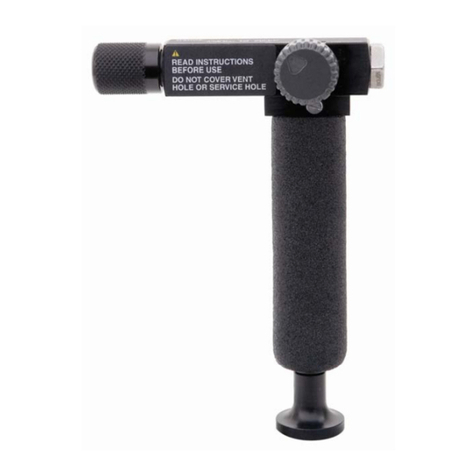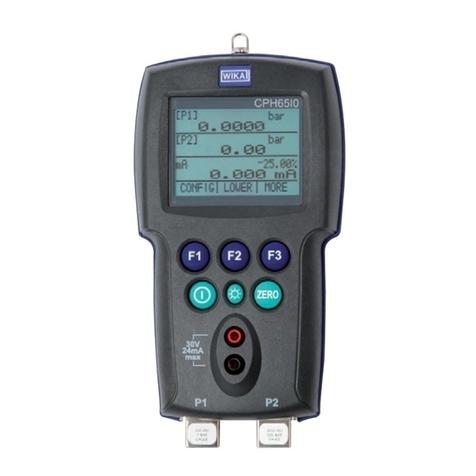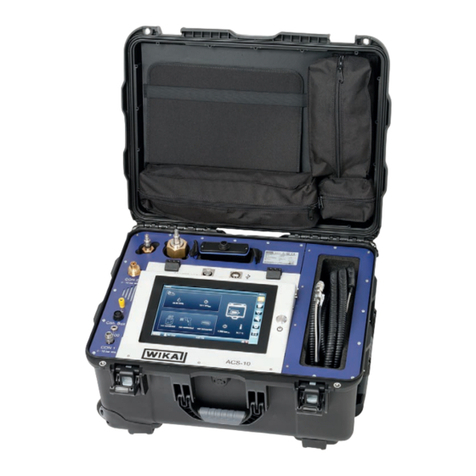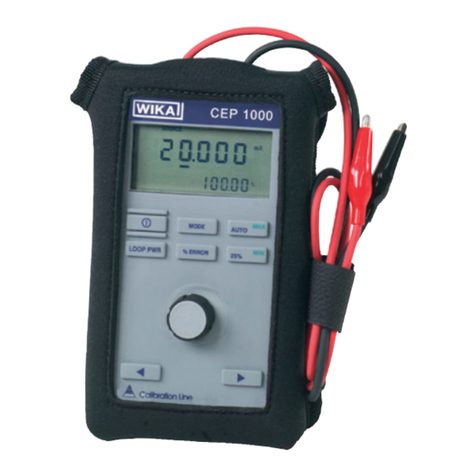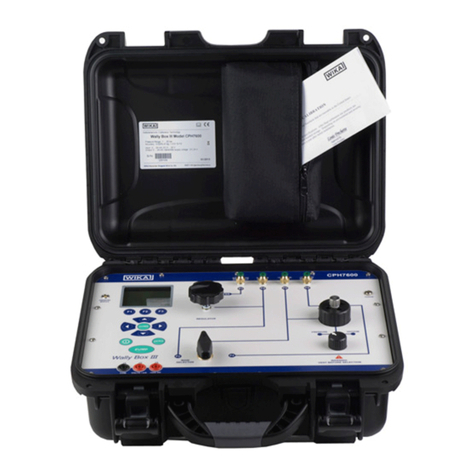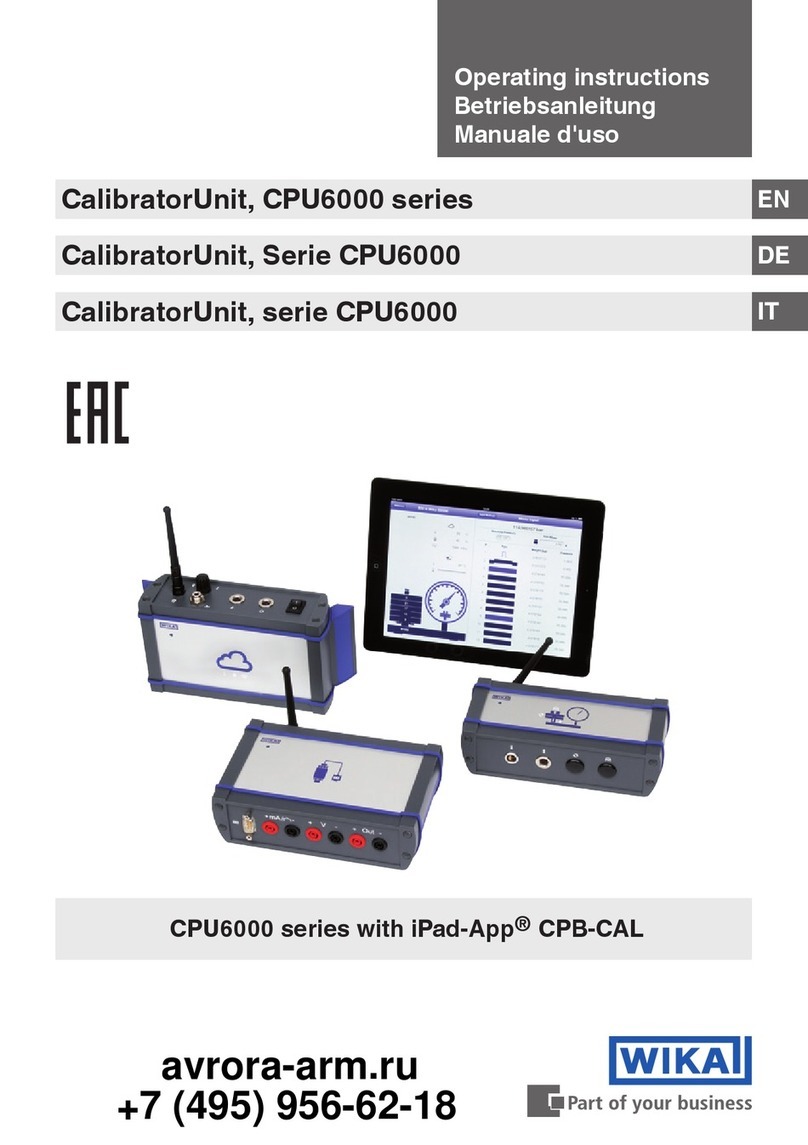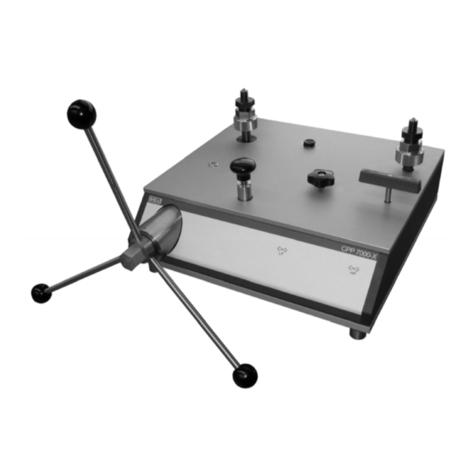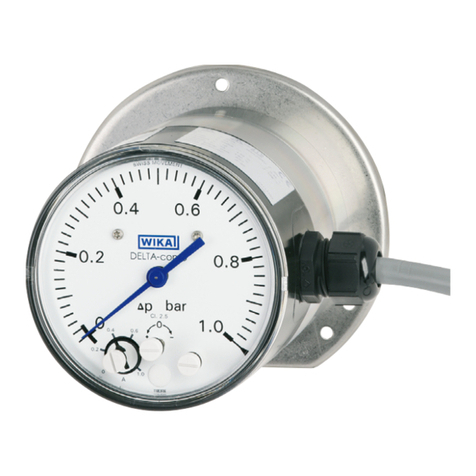
Contents
WIKA Operating Instruction, Model CPH7600 3
14051628.01 07/2012 GB/D
C
C
Co
o
on
n
nt
t
te
e
en
n
nt
t
ts
s
s
1General Information ............................................................................................................. 5
2Safety .................................................................................................................................. 6
2.1 Intended use ........................................................................................................................ 7
2.2 Personnel qualification ......................................................................................................... 7
2.3 Special hazards ................................................................................................................... 8
2.4 Labelling / Safety marks ...................................................................................................... 9
3Specifications .................................................................................................................... 10
4Design and Function .......................................................................................................... 13
4.1 Description ........................................................................................................................ 13
4.2 Scope of delivery ............................................................................................................... 13
4.3 Power supply ..................................................................................................................... 13
4.4 CPH7600 hand-held pressure calibrator, pressure connections ........................................ 14
4.5 CPH7600 hand-held pressure calibrator, keypad ............................................................... 15
4.6 Menu-Structure .................................................................................................................. 16
5Transport, packaging and storage ..................................................................................... 18
5.1 Transport ........................................................................................................................... 18
5.2 Packaging .......................................................................................................................... 18
5.3 Storage .............................................................................................................................. 18
6Commissioning, operation ................................................................................................. 19
6.1 Calibrator display ............................................................................................................... 19
6.1.1 Main display functionality ................................................................................................... 19
6.1.2 Main menu Functionality .................................................................................................... 20
6.2 Using the backlighting........................................................................................................ 21
6.3 Using the "ZERO" function................................................................................................. 21
6.3.1 External pressure module (not absolute) ........................................................................... 21
6.3.2 External pressure module (absolute) ................................................................................. 21
6.4 Other menu controlled functions ........................................................................................ 21
6.4.1 Setting the contrast ............................................................................................................ 22
6.4.2 Locking and unlocking configurations ................................................................................ 22
6.4.3 Saving and recalling settings ............................................................................................. 22
6.4.4 Setting auto shut-off parameters ........................................................................................ 23
6.4.5 Activating and deactivating a display ................................................................................. 23
6.4.6 Damping ............................................................................................................................ 23
6.4.7 Pump limit .......................................................................................................................... 23
6.4.8 HARTTM-Resistor ............................................................................................................... 24
6.5 Basic Setup and initial pressure generation ....................................................................... 24
6.6 Measuring pressure ........................................................................................................... 24
6.6.1 Media compatibility ............................................................................................................ 25
6.6.2 Measuring pressure with external modules ........................................................................ 25
6.7 Measuring and sourcing current (4 ... 20 mA) .................................................................... 26
6.8 Measuring voltage ............................................................................................................. 27
6.9 Performing a pressure switch test ...................................................................................... 28
6.10 Calibrating transmitters ...................................................................................................... 30
6.10.1 Using the mA measurement function ................................................................................. 30
6.10.2 Calibrating a pressure-to-current transmitter ...................................................................... 31
6.10.3 %-Error function ................................................................................................................. 32
6.11 MIN/MAX value capture ..................................................................................................... 35
7Maintenance, cleaning and recalibration ............................................................................ 36
7.1 Maintenance ...................................................................................................................... 36
7.2 Cleaning ............................................................................................................................ 36
7.3 Recalibration ..................................................................................................................... 36
8Faults ................................................................................................................................ 37
